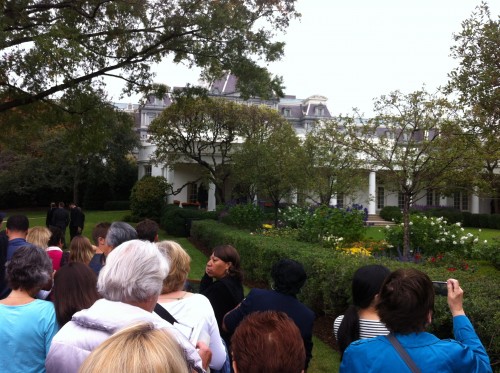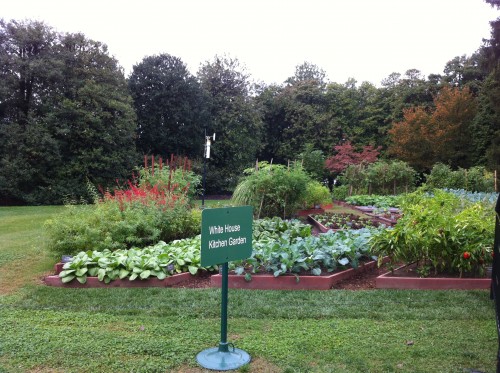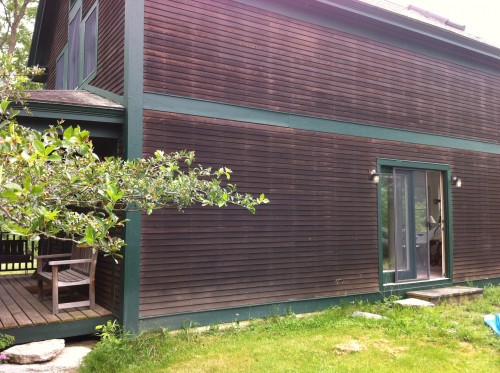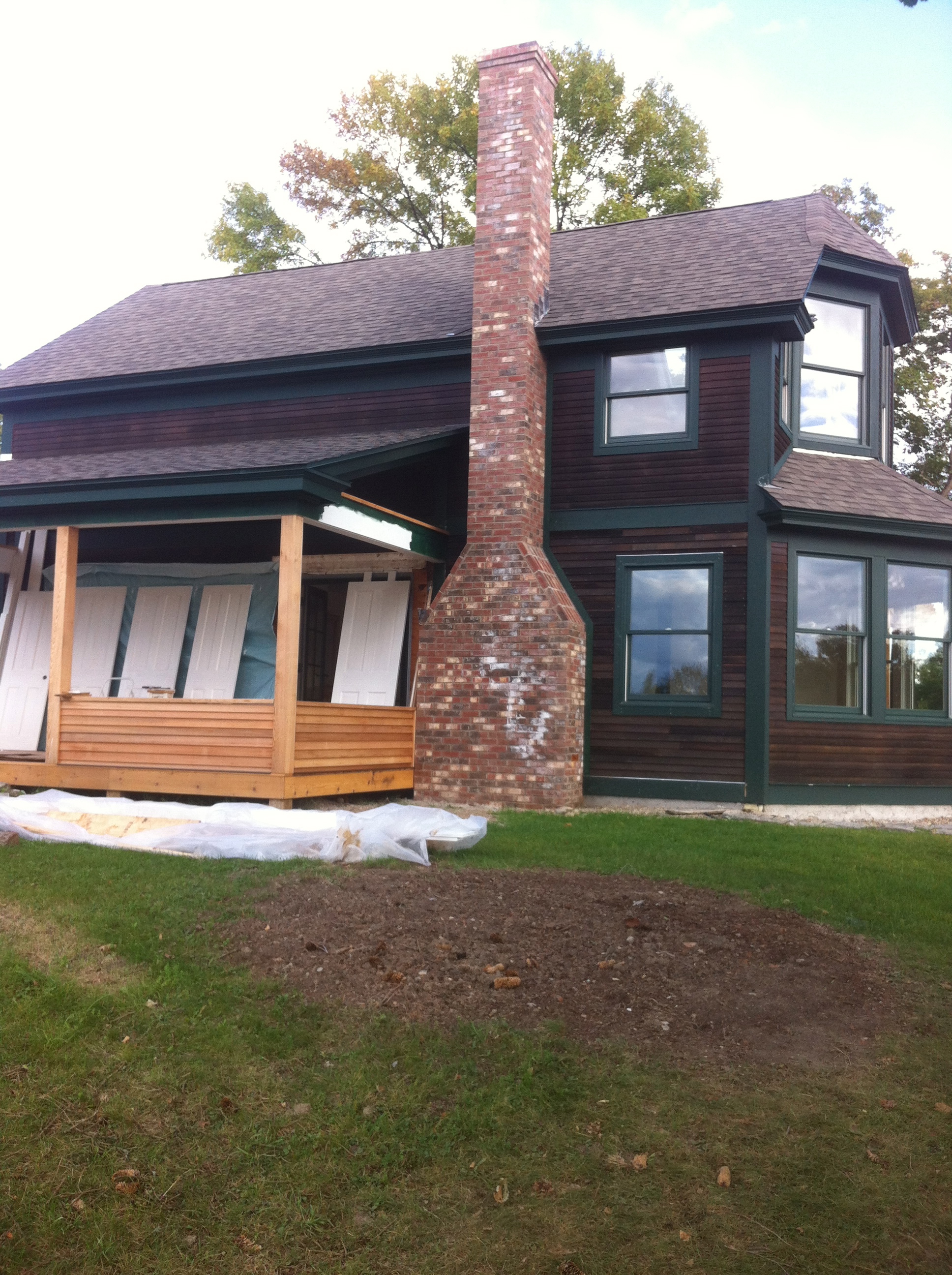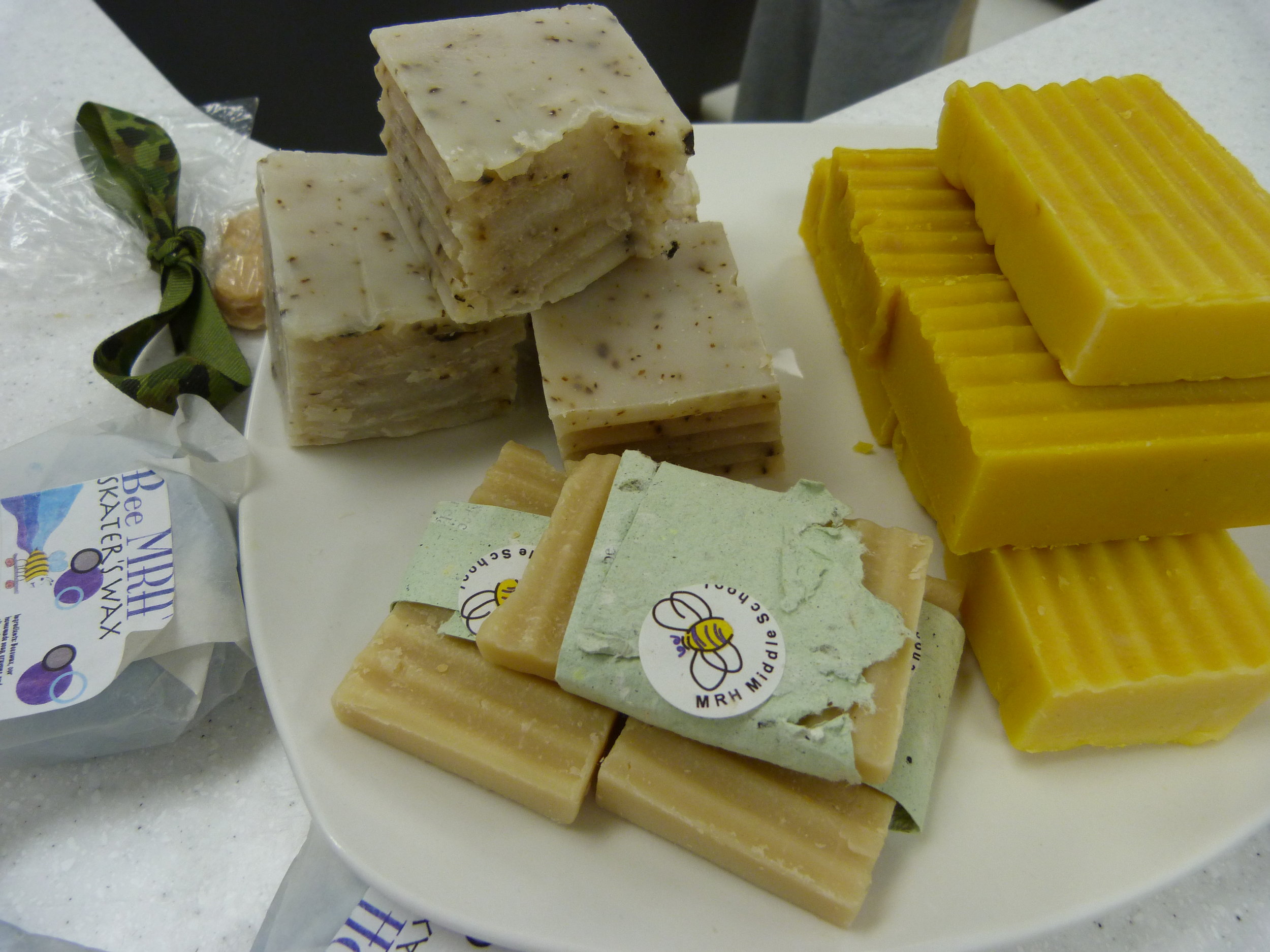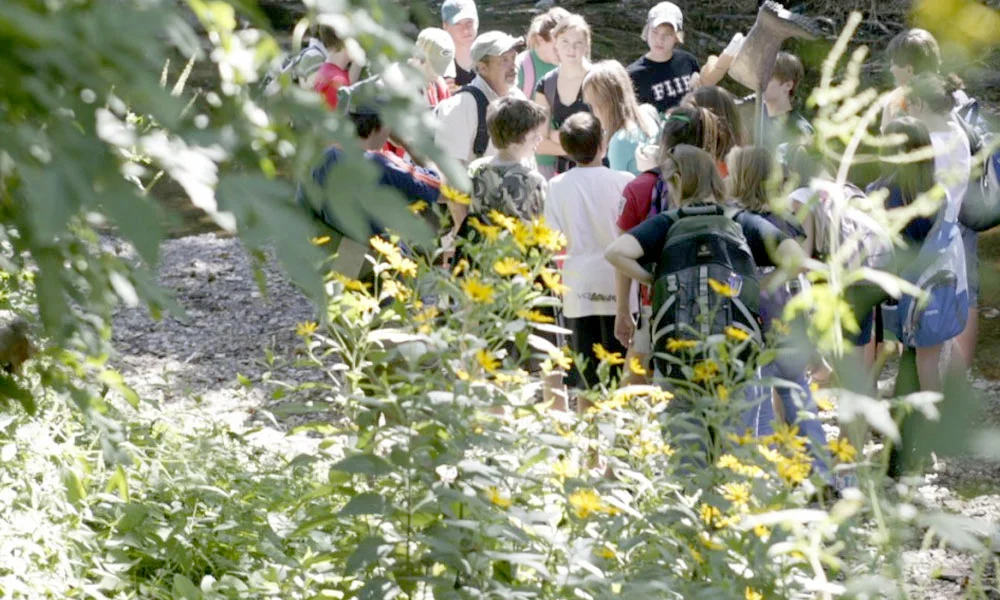
BLOG ARCHIVES
iBook Author, A Great New Tool for Documentation
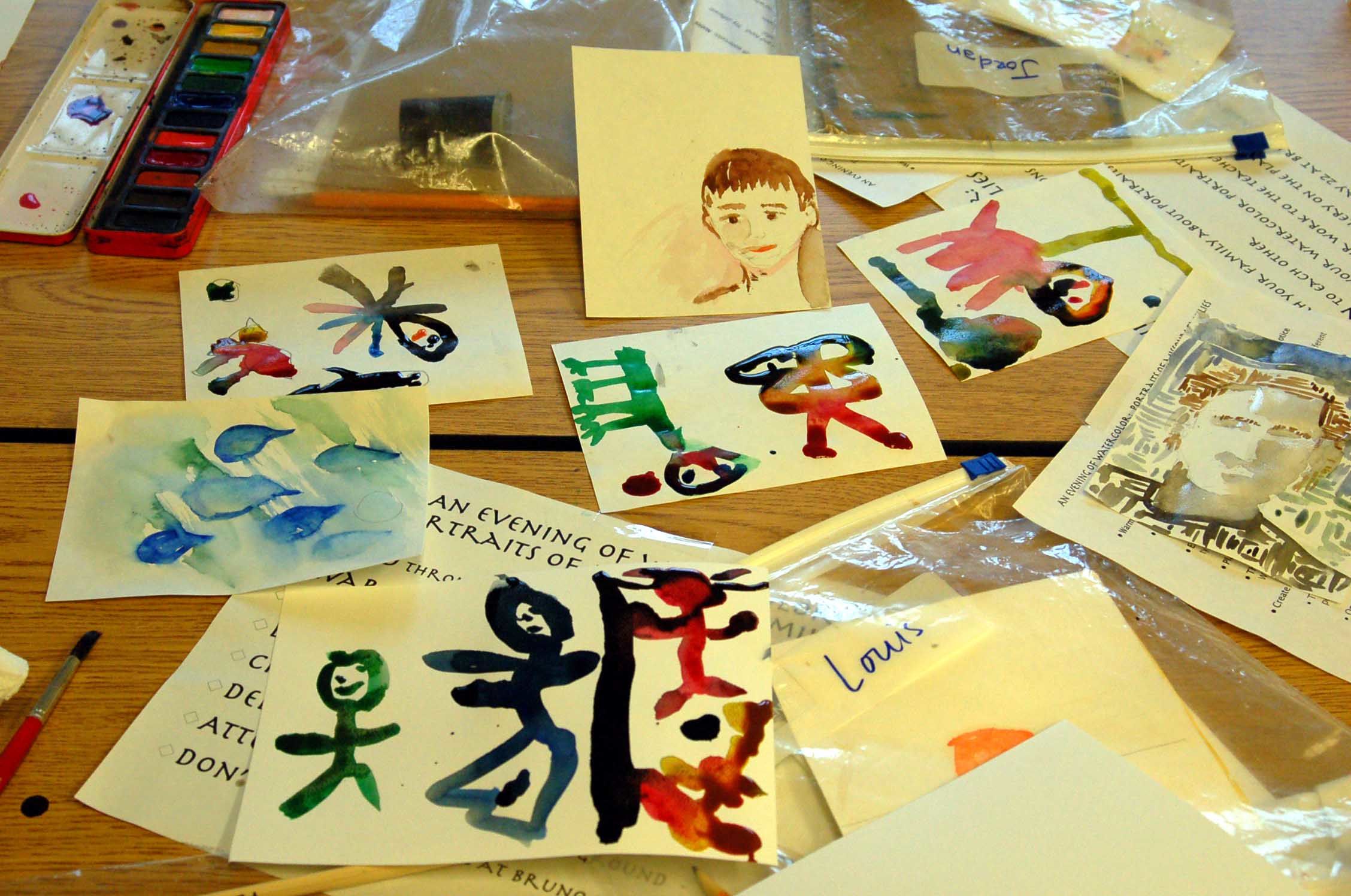 A couple of weeks ago, I alluded to a current project, the composition of an iBook (the Apple version of eBooks that are designed for viewing on iPads only). This new software was first introduced to me by my brother-in-law, Joe Levine, the co-author of one of the very first iBook textbooks, the best selling high school Biology textbook in the country. Joe first described the Apple software to me three years ago when it was still in design/development, and he alluded to a project he was working on but couldn't tell me about because it was an exciting top secret! Turns out the project was the textbook in iBook. His iBook version of Biology hit the market the day Apple began giving away iBook Author, about a year ago.
I've just completed the first draft of an iBook, What Are the Relationships between Animals and Humans, A Year Long Multidisciplinary Research Project by Three to Thirteen Year Olds at The St. Michael School. I spent the month of October working on it on site with the faculty at The St. Michael School. Our plan is to continue to edit the book over the next few weeks, then open it for view to parents and a limited outside audience (if you'd like to be among them send a request to ashley@cadwellcollaborative.com. After the vetting process, we'll publish it at the Apple iBooks website for all the world to see.
A couple of weeks ago, I alluded to a current project, the composition of an iBook (the Apple version of eBooks that are designed for viewing on iPads only). This new software was first introduced to me by my brother-in-law, Joe Levine, the co-author of one of the very first iBook textbooks, the best selling high school Biology textbook in the country. Joe first described the Apple software to me three years ago when it was still in design/development, and he alluded to a project he was working on but couldn't tell me about because it was an exciting top secret! Turns out the project was the textbook in iBook. His iBook version of Biology hit the market the day Apple began giving away iBook Author, about a year ago.
I've just completed the first draft of an iBook, What Are the Relationships between Animals and Humans, A Year Long Multidisciplinary Research Project by Three to Thirteen Year Olds at The St. Michael School. I spent the month of October working on it on site with the faculty at The St. Michael School. Our plan is to continue to edit the book over the next few weeks, then open it for view to parents and a limited outside audience (if you'd like to be among them send a request to ashley@cadwellcollaborative.com. After the vetting process, we'll publish it at the Apple iBooks website for all the world to see.
Here are a number of reasons I loved working in iBook Author:
1. Because I am familiar with the Apple word processing program "Pages" and the Apple presentation program "Keynote" I found iBook Author very easy to use. The format is very similar and the commands are in many cases identical. Now, I am a Neanderthal in the World of Computers; so, two things: if I can use this program, any one can; and, I am a veteran Mac user and addicted to the Apple One to One program...while in St. Louis I was tutored by teachers at the Apple Store at the Galleria: Sean, Sean, Alan, Ben, Dan and Bob (this is the best $99 I spend all year...I can use it in any Apple Store...Boston or St. Louis...or...). I know, now you're wondering, How much is Apple paying him? I wish they were. I'd gladly accept and give the entire multimillion dollar endorsement fee to The St. Michael School where all the real work was done.
2. The medium fits the message, to adapt a 70's phrase from Marshal McLuhan. In this case the message is: Make Children's Learning Visible.
This is the cover of a 37 page book, written and illustrated by a sixth grader for primary grade children. In her story, the author, Violet advocates for more humane treatment of animals. Violets classmates each wrote illustrated books. In the iBook we were able to create galleries that hold scanned reproductions of eight of these books. Each of them a different story and a different medium. I can't resist, here is page two of Hope's story, George the Horse: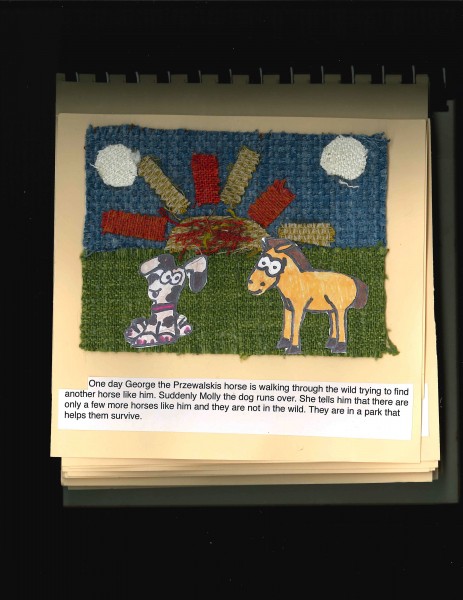
I insert these two pieces not so much as enticement to ask for more, but as an opportunity to state that in the iBook the whole process of making the illustrated stories are there (in over 200 slides) for the viewing and discerning and wondering and adapting.
This software allows the author to feature children's work extensively. It has been and will always be prohibitively expensive to publish on paper an expansive documentation of children's works. That said, of course, there are several wonderfully informative narratives about the process of creating a school environment that stimulates excellent student work. Two of my favorites are: An Ethic of Excellence, by Ron Berger, and Bringing Learning to Life, by Louise Cadwell (full disclosure: yes, Louise is my wife and partner in Cadwell Collaborative and mother of Alden and Chris and grandmother of Asher). When I think about what these two authors did with their limited medium, I can only wonder what they'll do when they discover iBook Author.
3. An expansion of #2...The medium is interactive. The first draft of our iBook includes galleries (slideshows) with several hundred photos of children making things together, videos of their conversations and productions, transcripts of dramatic productions, photographic and scanned reproductions of books made by students, keynote presentations composed by students, reproductions of "advocacy brochures" composed by students. All of these works are given context by the teachers' curriculum maps and reflections. However, relative to the volume of representation of the children's work, the teacher's work is maybe 20%.
The big difference in the first iteration of our iBook and previous documentation of long and short term projects, is that in the past we have tended to focus more on teachers' narratives and reflections, whereas in the iBook we have chosen to take full advantage of the medium; to layout much of the story in photos, dialogue, and in expanded records of the children's creations. We have consciously chosen to maximize Making the Children's Learning Visible.
The White House Kitchen Garden
Last weekend we went to Washington D.C. to be with Louise's family (her brother, Steve, lives there). On Friday morning we went on a tour of the White House Gardens. I have to admit, I was somewhat blasé about the idea...until I walked through the gate and saw this:

It's not an overwhelmingly huge house. The proportions seem just right, especially because of the surrounding grounds, a wonderful composition of open space and magnificent trees. There was quite a crowd, but the general feeling among the throng was so enthusiastic and respectful that wandering the pathway was very enjoyable. Here's Jacqueline Kennedy's garden:
And the Rose Garden:
The Rose Garden attracted the largest crowd...and I soon discovered why. President Obama could be seen through the window of the Oval Office at the end of the garden. According to a couple from Iowa with whom I spoke, as he entered the office he had come to the window and waved. Can you see him?
I think I did...but I soon was much more attracted to the prospect of seeing the Kitchen Garden, down the sweeping driveway, below. It is quite a feat. Very well organized and well tended. Surprise, surprise...our First Lady has inspired a great example for us all. It is large, but when I paced it off, I could see that it would fit quite easily in most front or back yards.
Just to one side of the Kitchen Garden, there is a beehive.
It was wonderful to be inspired by the First House of our nation. I think I'll begin planning our Vermont kitchen garden right now.
Deconstruction...Design...Reconstruction....
These past four months, I have been focused on the renovation of our Vermont home. I designed and built the home in 1985 and with our move from St. Louis to Boston and Vermont, it was time for a bit of a rehab. We started the first of June and two weeks ago, on September 27th, we moved our furniture in. Today, I’m sitting in St. Louis, helping The St. Michael School compose an iBook that tells the story of a year-long project of two years ago. The two projects, one on a house and the other based on a curriculum, involve a remarkably similar process of deconstruction, design and reconstruction.
In Vermont, Louise and I started here:

Our first step was deconstruction.
Then we designed what we wanted, in this instance a screen porch and fireplace on the west wall...and reconstruction began.
We went through the same process with the kitchen, study, master bedroom and bath, guest bedrooms and bath, and landscaping. It was an exhilarating, tedious, sweaty, frustrating, long, relentless, creative and ultimately fulfilling process.
The same is true with The St. Michael School iBook. We started more than a year ago. First we deconstructed the entire year’s work of 2010-2011... all the different experiences and projects of the students (ages 3 to 12) focused on the central question: What are the relationships between animals and humans?
With all the data gathered before us, we designed and installed an exhibition of their work in the central areas of the school. Here are two sections of the exhibition.

 Now, we have decided to recompose the exhibition in an iBook. Standby. We hope to have the first draft completed by the end of next week...and, if all goes well (which, if it’s like any construction project I’ve ever been involved in...it will...in time....) it will be up for all to see by the end of the month. As I said, standby, as we enjoy (with a bit of breathing and smiling at key junctions) the process of deconstruction, design and reconstruction.
Now, we have decided to recompose the exhibition in an iBook. Standby. We hope to have the first draft completed by the end of next week...and, if all goes well (which, if it’s like any construction project I’ve ever been involved in...it will...in time....) it will be up for all to see by the end of the month. As I said, standby, as we enjoy (with a bit of breathing and smiling at key junctions) the process of deconstruction, design and reconstruction.
Creativity and Collaboration
 We are excited to be near our alma mater, Middlebury College, in Vermont. We are so impressed by the work that they are doing and the connections that they continue to make with their own local community as well as around the world.
We are excited to be near our alma mater, Middlebury College, in Vermont. We are so impressed by the work that they are doing and the connections that they continue to make with their own local community as well as around the world.
This fall, His Holiness the 14th Dalai Lama, the spiritual leader of Tibet and winner of the 1989 Nobel Peace Prize, will visit the Middlebury College campus for the third time. The first time, our sons were in elementary school and heard him speak during an afternoon when he met with children of the community. This event took place outside in early fall and it was unforgettable...hundreds of children listening and asking questions, the Dalai Lama taking the children's questions very seriously and also laughing and joking such that everyone relaxed and had a wonderful time. This fall, the Dalai Lama will explore, "Cultivating Hope, Wisdom, and Compassion" when he visits Middlebury College to deliver two lectures. The title of his talk for the public is "Finding Common Ground: Ethics for a Whole World."
Last weekend, Middlebury College hosted a four day symposium on Creativity and Collaboration.
Their annual Nicholas R. Clifford Symposium kicks off each academic year by giving the campus community rich opportunities to discuss and experience timely topics from many perspectives. This year's Symposium featured over 30 events with an impressive lineup of speakers, performances, and panel discussions.
The opening keynote speech was delivered by Peabody Award-winning radio producer Julie Burstein, author of the acclaimed book “Spark: How Creativity Works." Burstein has devoted her life work to conversation with highly creative people—interviewing, probing, guiding, and creating public radio programs about them and their work. In her book, she offers a tour through some of the essentials of creativity, exploring its mysterious workings, and helping us find more of that dimension ourselves.
What an inspiration this campus is. So many opportunities to engage in thoughtful dialogue about what matters most in our lives and on our planet. These are the themes that we are thrilled to consider with the educators with whom we work. Inventing a hopeful, healthy, vital future will take the creativity, collaboration and grounded ethics of every one of us across generations.
Great Schools in the News!
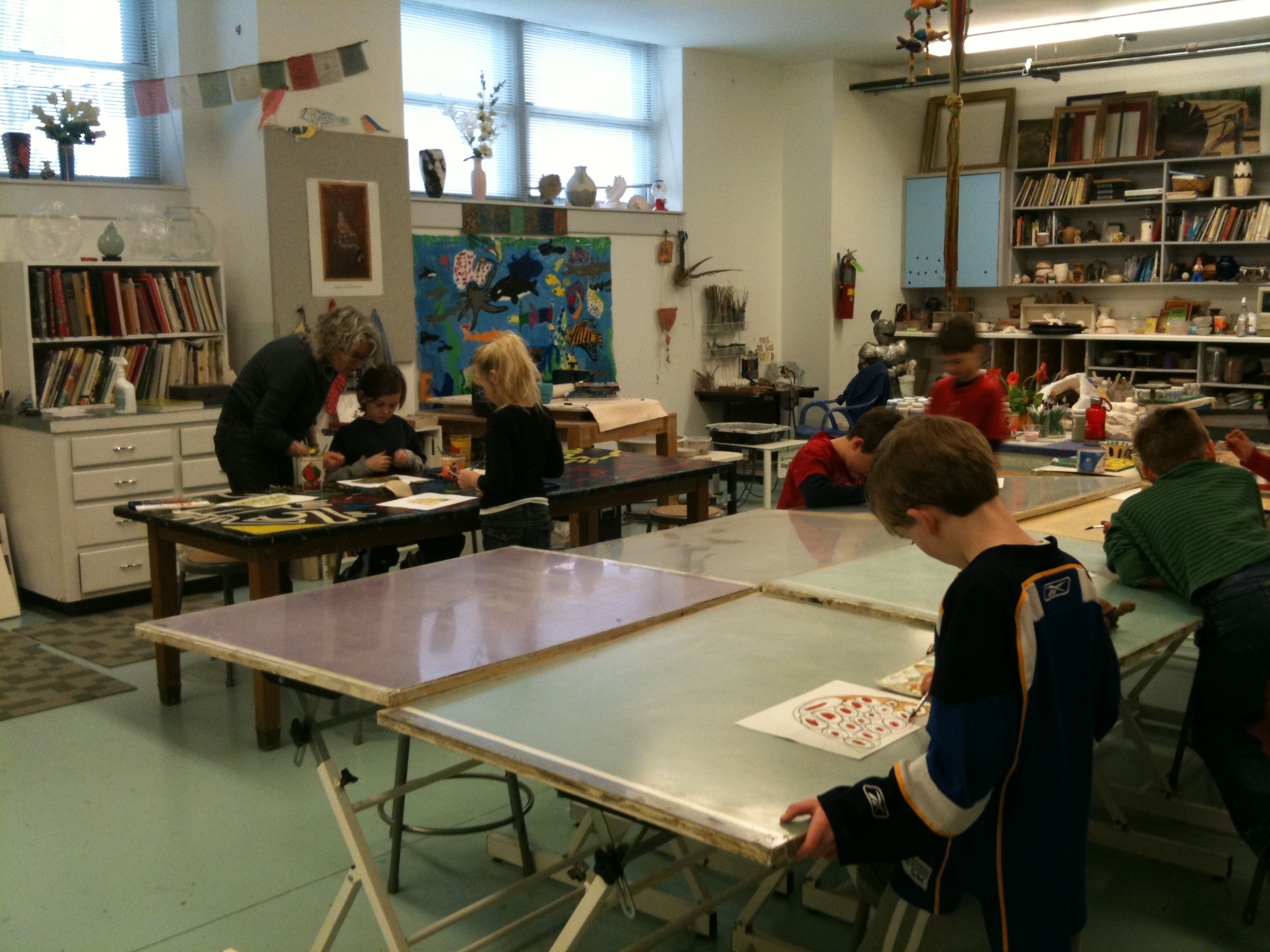 Two of the schools that we work with in St. Louis were just featured in an engaging blog called Learning Pond: Innovation in Education, Meeting the Challenges of the 21st Century by educator and blogger, Grant Lichtman.
Two of the schools that we work with in St. Louis were just featured in an engaging blog called Learning Pond: Innovation in Education, Meeting the Challenges of the 21st Century by educator and blogger, Grant Lichtman.
This fall, Grant is visiting 60 schools across the county where "leading educators are implementing serious change to meet 21st century challenges."
The blog post on Maplewood Richmond Heights features the Middle School and highlights work that is truly inspiring...the bee keeping project, the aquaponics fish tank that produces fish for the cafeteria, the working gardens, expeditionary learning, the exceptionally hard working and spirited faculty, the high achieving and highly engaged students...This school is the one that so impressed Ron Berger and Peter Senge, leading authors and thinkers who know the school well. Cadwell Collaborative is proud to be a part of the team at Maplewood Richmond Heights.
The post on The College School highlights the beautiful campus including working gardens, functioning streams and wooded areas developed as outdoor classrooms as well as a recently acquired 29 acre outdoor campus in Pacific, Missouri; the high value placed on creativity and innovation in the faculty and students and as a way of teaching and learning; the mission as it is lived and communicated in the school and in the community every day. The College School is one of two schools in Missouri to receive the 2012 Green Ribbon School Award. Louise is proud to have worked with the College School for 18 years and to continue to work with College School educators on innovative projects.
Thank you, Grant Lichtman, for your travels to and writing about exemplary schools who are creating the way of the future!





